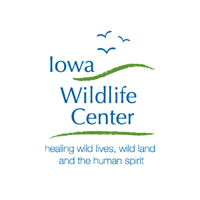 Gunshot to the brain is humane euthanasia, rehab specialist says
Gunshot to the brain is humane euthanasia, rehab specialist says
Deciding how or whether Jefferson police officers deal with unowned outdoor cats is on the to-do list of the Jefferson city council’s law enforcement committee. Mayor Craig Berry hopes the committee, which includes council members Harry Ahrenholtz and Dave Sloan along with city staff, makes a recommendation soon.
The Jefferson police department quit lending live traps and relocating unowned outdoor cats – called “community cats” by some and “feral cats” by others – after public response to a confirmation at an April council meeting by police chief Mark Clouse that JPD officers sometimes shot cats. The ill-fated cats were unowned outdoor cats that had been trapped and appeared uncared for and unadoptable.
Berry said Tuesday the hiatus from dealing with cats had been long enough and he wants the council to decide soon how to proceed. “Not doing anything is not a solution,” chief Clouse added.

Marlene Ehresman, co-founder and executive director of the Iowa Wildlife Center based in Ames, spoke at the Jan. 8 council meeting to explain concerns with the trap-neuter-return method promoted by Alice Burton of Alley Cat Allies last month.
The Iowa Wildlife Center is a non-profit organization with a mission to provide professional wildlife rehabilitation services for native species; professional conservation education programs; and wildlife assistance skills training for those who want to get involved in wildlife rescue or rehabilitation.
According to Ehresman, cat owners live behind a “wall of denial,” not admitting that cats can be dangerous animals.
“Caught by cat” is one of the leading causes of injuries to birds seen by wildlife rehabilitation specialists, behind “fell from nest” and “nest destroyed,” she said. She told stories of a gold finch, a box snake, and a big brown bat that have been brought to her after being injured by cats. Because of the particular bacteria in a cat’s mouth, cat bites can cause systemic infections in a very short time.
House cats are considered by most wildlife rehabilitators and wildlife biologists to be the most invasive of introduced, non-native predators. “Pet cats and feral house cats are significant predators of native wildlife in the US, in other countries, and in island habitats,” she said.
“In a world facing a crisis of mass extinction of native species on a planet that feels increasing pressure from our own species, we really must work toward repairing healthy ecosystem functions, not destroy them by allowing free-roaming cats to become increasing problems,” Ehresman said.
Wildlife rehabilitation specialists have been trained in humane euthanasia methods. According to Ehresman, a gunshot is an acceptable method. “If you shoot an animal in the brain it’s not feeling anything at that point… If it’s a skilled person that’s been trained, that can be a highly accepted form of humane euthanasia. …. It goes back to what’s the most cost effective for a community, what’s the most acceptable because of morals and values, and the effectiveness and quickness,” she said.
“This is a human-caused problem and humans have to fix it, and sometimes, in my estimation, it’s at the cost of a cat’s life….. There’s a litany of solutions for the situation, but I really do not believe that any community cat, any T-N-R program is going to solve it,” Ehresman said.
Ehresman is a professional acquaintance of council member Matt Wetrich. She reached out to him about speaking to the council.
